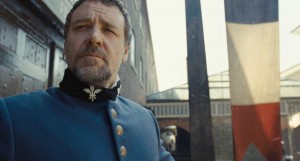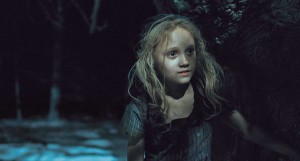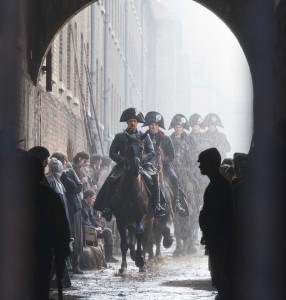
For the new movie version of the hit theatrical show Les Misérables, the filmmakers engaged in a rigorous 70-day shoot with musical sequences realized live on set. Aboard from the beginning was editor Chris Dickens who faced the technical challenges of cutting a production without the traditional method of editing a musical by syncing the music in post to lip-synced on-set shots performed to playback. “It’s more like cutting as you would a straight drama with sync sound and putting the music on later,” Dickens stated. “In that way, it was more the kind of workflow that would be used on any movie. The tempo may be different from take to take. [Director] Tom Hooper wanted the actors to flex their muscles and give a proper performance and develop it as they were shooting.”
Without question, with actors on set listening to a live piano accompaniment through a small earpiece, not only would creating final musical performances from a vocal standpoint present many options, but adding finished orchestral music after picture was locked created further editing choices. “That creates another challenge: picking the right performance to complement the music,” Dickens related. “The music was going to be finished after it was shot later, so we can change the music a bit as well if pictures are operating a different way, or if scenes are operating differently from the stage musical.”
 Working with Dickens in postproduction process was editor Melanie Oliver, who not only co-edited the film with Dickens but also worked diligently with the music to assure that it all blended fluidly with onscreen visuals. “It’s been fabulous but so difficult to set up the song without killing it,” she remarked well into October when sound became the primary focus of her work. “It’s been quite a process to make the music and film world mesh – it’s all very rhythmical. These last couple of weeks, it’s been quite a process. I feel so lucky to work on this film since, when I work on a normal film, I don’t intimately have a relationship with the music editor. How do I support the performances when they have just come off of another performance? The songs have an integrity that you have to protect.”
Working with Dickens in postproduction process was editor Melanie Oliver, who not only co-edited the film with Dickens but also worked diligently with the music to assure that it all blended fluidly with onscreen visuals. “It’s been fabulous but so difficult to set up the song without killing it,” she remarked well into October when sound became the primary focus of her work. “It’s been quite a process to make the music and film world mesh – it’s all very rhythmical. These last couple of weeks, it’s been quite a process. I feel so lucky to work on this film since, when I work on a normal film, I don’t intimately have a relationship with the music editor. How do I support the performances when they have just come off of another performance? The songs have an integrity that you have to protect.”
Given the long takes of the musical numbers, the editors had yet another problem with which they had to contend. “Rather than breaking a song down into many different shots, there would be a four-five minute take,” Dickens noted. “The cameras would travel huge distances to capture the whole thing in one take with the actors and let us have the essential performance there. You have options there between cameras. In one scene, we had four eight-minute takes shot with seven cameras. It’s a great way to shoot because the performance has got integrity. Once you have grouped the cameras together, I would have my first assistant do a pre-cut with different angles. I would start pulling out the bits that I liked and go back and rework it many, many times.”
 Once a sequence was deemed to be in the can, Hooper allowed his editors the initial freedom to implement their version of each piece of the film. “I like to have my first hit on the dailies,” Oliver remarked. “I don’t like to talk to anyone first thing. I normally start with a kernel of a shot to start, then navigate my way through. Tom would respond to a cut then talk about the rushes.”
Once a sequence was deemed to be in the can, Hooper allowed his editors the initial freedom to implement their version of each piece of the film. “I like to have my first hit on the dailies,” Oliver remarked. “I don’t like to talk to anyone first thing. I normally start with a kernel of a shot to start, then navigate my way through. Tom would respond to a cut then talk about the rushes.”
Surely, with such a large amount of musical numbers, an essential aspect of cutting is how to end one song and still leave space before the next one commences. “How big do you make the end or how small do you make it?” said Oliver. “It’s been a little bit of trial and error. These last couple of weeks, it’s started to crystallize. Tom was sure [the music] would have a different effect on how you cut it. To me, it’s what’s going on in the eyes and what their bodies are doing – that rhythm of how you finish the song in sustained chords, going into the next scene.”





